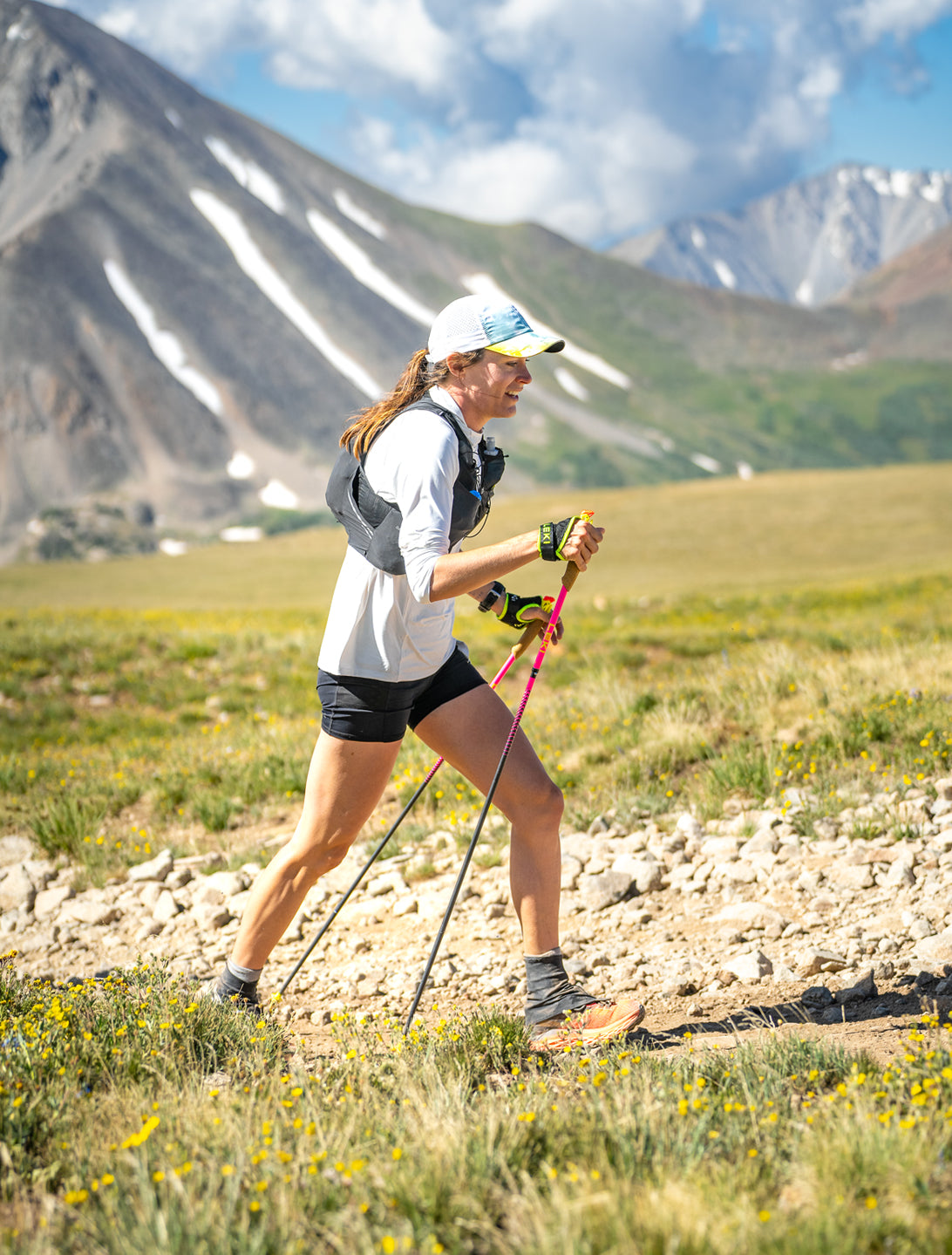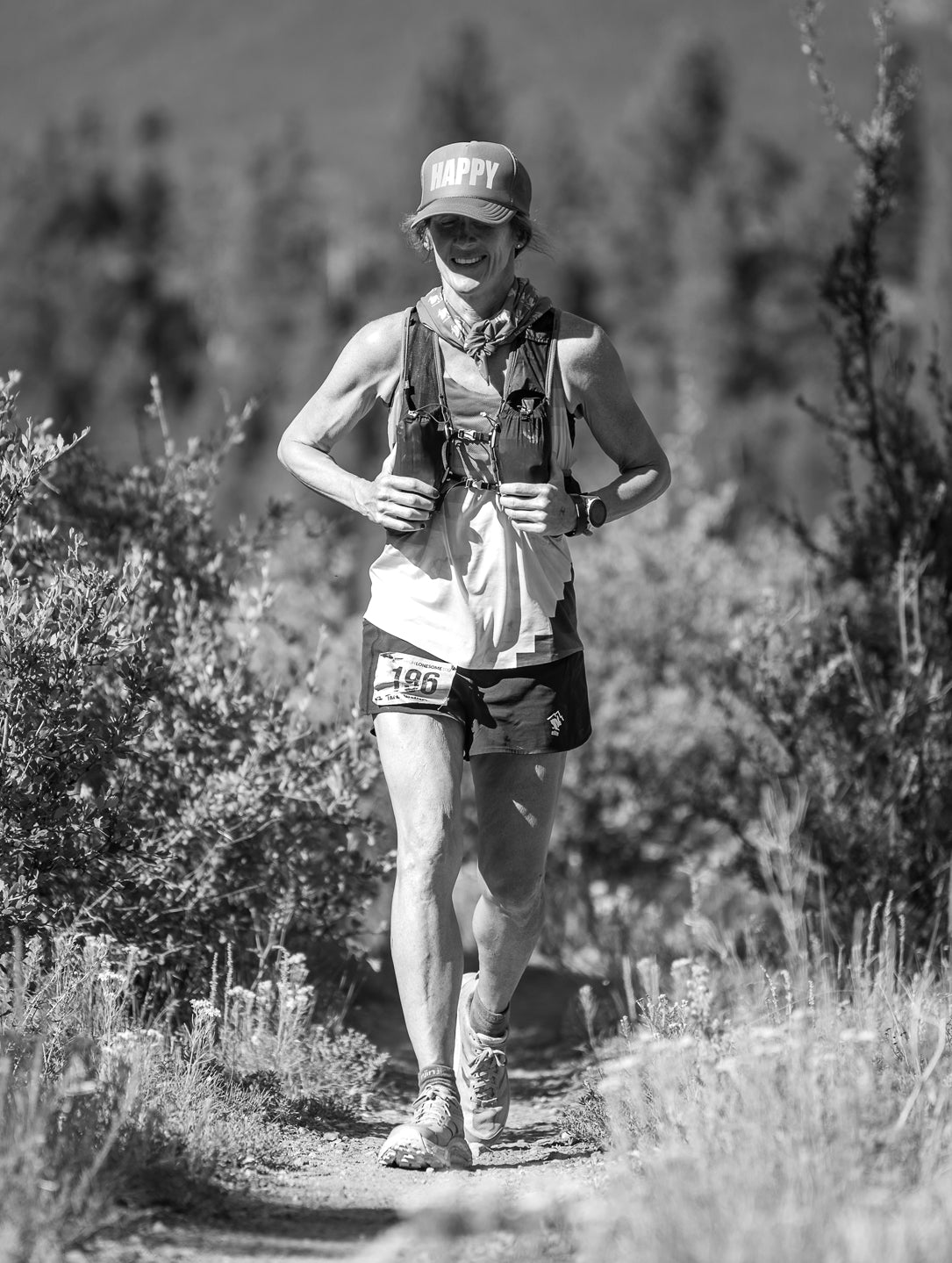Lonely is a state of feeling, but lonesome is a state of being. If you are lonesome, you are literally all alone, a solitary soul navigating the empty expanse, armed with nothing but your wits. Is there any word that better evokes the notion of the Old West? Is there any word that better evokes running solo, at night, in the mountainous heart of that wild west, buffeted by the wind on a ridge above treeline, accompanied only by a billion stars, the far-off bobbing of a solitary headlamp? Is there a word more filled with melancholy, or one so oddly inviting?
But for women, there is another layer to lonesome, another connotation: the notion of being exposed. Exposed emotionally and physically, exposed to the misogynistic mockery of those who oppose the very idea that a woman should explore a rocky trail in the middle of night, in the middle of nowhere. And most serious of all, exposed to predators, both human and not. These fears are very real, very justified, and a real barrier to equal participation in the sport.
“When I start working with women who are new to the sport,” says Warren, who coaches women in Utah, and has close ties with her local chapter of Trail Sisters, a nationwide collection of women’s trail-running groups, “they are afraid of three things: being made fun of, being taken, or being eaten.”
Road runners may laugh at that last one, but anyone who has encountered a bear or big cat on the trail knows how real, how visceral that fear can be. And the fear of being taken? Well, nobody laughs at that. Warren has her athletes deal with these fears through a combination of preaching preparedness and teaching women to take on the fears in little doses: short solo runs on the same stretch of trail over and over, for instance, until an athlete begins to feel comfortable in wilder terrain. And of course, providing access to other women with whom to train and race.
Both Warren, with her Logan crew, and McDonald, who runs with an Aravaipa team in Flagstaff, know the security and support a local trail community can provide. And both are very conscious ambassadors of the sport. Both are thankful to have been invited into a community of like-minded citizens, both men and women, and both are intent on welcoming others into that community.


Community. It’s a word you hear a lot if you listen in on the conversations of trail and ultrarunners. It’s a word that is used constantly, but not a word that is used lightly. It rolls so easily off the tongues of trail and ultrarunners because they all share a great love for a difficult thing, and because most of the rest of society has no idea they exist. The kind of community that is synonymous with a tribe. But volunteer at any event, or even take it in as a spectator, and the bonds between those who love the sport are impossible to ignore, and nearly as impossible to resist. So why then, the disparity in numbers between male and female participants in trail ultrarunning, particularly in 100-mile events? Why, given that the percentage of women participating in road races up to the marathon is larger than that of men? And why, in a sport where arguably the biggest star is a woman, are women not flocking to the starting lines of 100-mile races?
One answer lies in systemic barriers placed between women and participation in trail races of 100 miles or more. We touched on that notion earlier when talking about fear of being exposed to mockery, attack, or abduction while running alone in isolated places. It is also true that women in general are busier than they have ever been, and there’s no way around it, training for 100 mile trail races takes copious amounts of time. But wait, men are busy too, right? While this is undoubtedly true, studies have shown that it also undoubtedly true that while a majority of women with children work outside the home, these women are still doing the lionesses share of raising the children. When Jeramiah has piano lessons, Nina has soccer practice, and little Robin has the croup, Mommy is not getting out for a four-hour trail session unless a motivated Daddy checks into the game. So, one answer to the participation conundrum is that our society stacks the deck against women’s participation in things that society does not value.
High Lonesome race director Caleb Efta is well-versed in trail running’s place in the vast web of social phenomena. And he is keen on making his race and his sport both aware of the social conditions that affect the sport, and addressing those conditions in a way that benefits both the sport and the world in general. For Efta this means environmental concerns, ideas of racial and ethnic equity, and most importantly to this story, gender equity.
“Systemic change is slow,” says Efta. “We are a race with 170 athletes. We can’t change the entire world or make everybody happy, but we can knock down barriers, elevate communities and the race. We know we can’t fix everything, but we want to try.”
One important thing Efta and his race officials have tried is to guarantee that exactly 50% of participants in the High Lonesome 100 will be women. The quality of the race in every respect gives this small race outsized influence in the American trail racing scene, and it certainly captured the attention of other race directors, who have offered their own solutions to a sport-wide gender equity problem. Efta is quick to deflect taking credit.
“We are not the first, nor the largest race to take a look at this issue,” he says, “and this is not the only way to approach it. But it is an important action and I’m glad it is being noticed, glad it’s getting traction, and that more and more races are taking gender equity seriously.”
Tara Warren and Lindsey McDonald have surely noticed.
“Women have come so far, and so has the sport. So many women want to run the longer ultras, but have so many demands, have families, et cetera, but when races work to let women know the option is available it really helps.” She continues, “The first year I ran High Lonesome I really didn’t know about the commitment to women, but when I got here, there were women everywhere! Competing, crewing, working the aid stations…it was inspiring.”
She compares this with her experience at Val d’Aran. “I don’t know if I saw a single woman on the course in Spain. I mean, I know they were there, but in comparison to men’s numbers, they were invisible.”
McDonald was very aware of how deep the High Lonesome women’s field was up front.
“I was struck by the competition and level of grit in the top ten – in all the women – but I don’t think I expected it to be quite this competitive. We were all going back and forth for a long time. I was in fourth for a lot of miles, going back and forth with the woman in fifth, who had the course record. And up ahead Georgia was battling it out with this lady who was also was also a running her first hundred.”
One thing to note: if the top three women in a prominent race are first-timers at the distance, that race is doing something right in attracting women runners, both to their event and to the distance in general.
To wit, McDonald says, “The race directors and volunteers were just exceptional, very helpful. It felt like family out there. The awards ceremony was really a celebration, even for the runners who didn’t finish. I think celebrating everybody who started is unique to this race, and I liked that part a lot. Extreme altitude means your race can go sideways real quick, and that doesn’t mean that you didn’t prepare hard for the race.” McDonald takes a deep breath. She’s getting kind of worked up, kind of passionate. “I mean, it’s months and months of work, and I think celebrating those four or six months of hard work is important, even if you didn’t finish that day.”
Kind of sounds like a race both men and women might line up to get into. Kind of sounds like a community.












